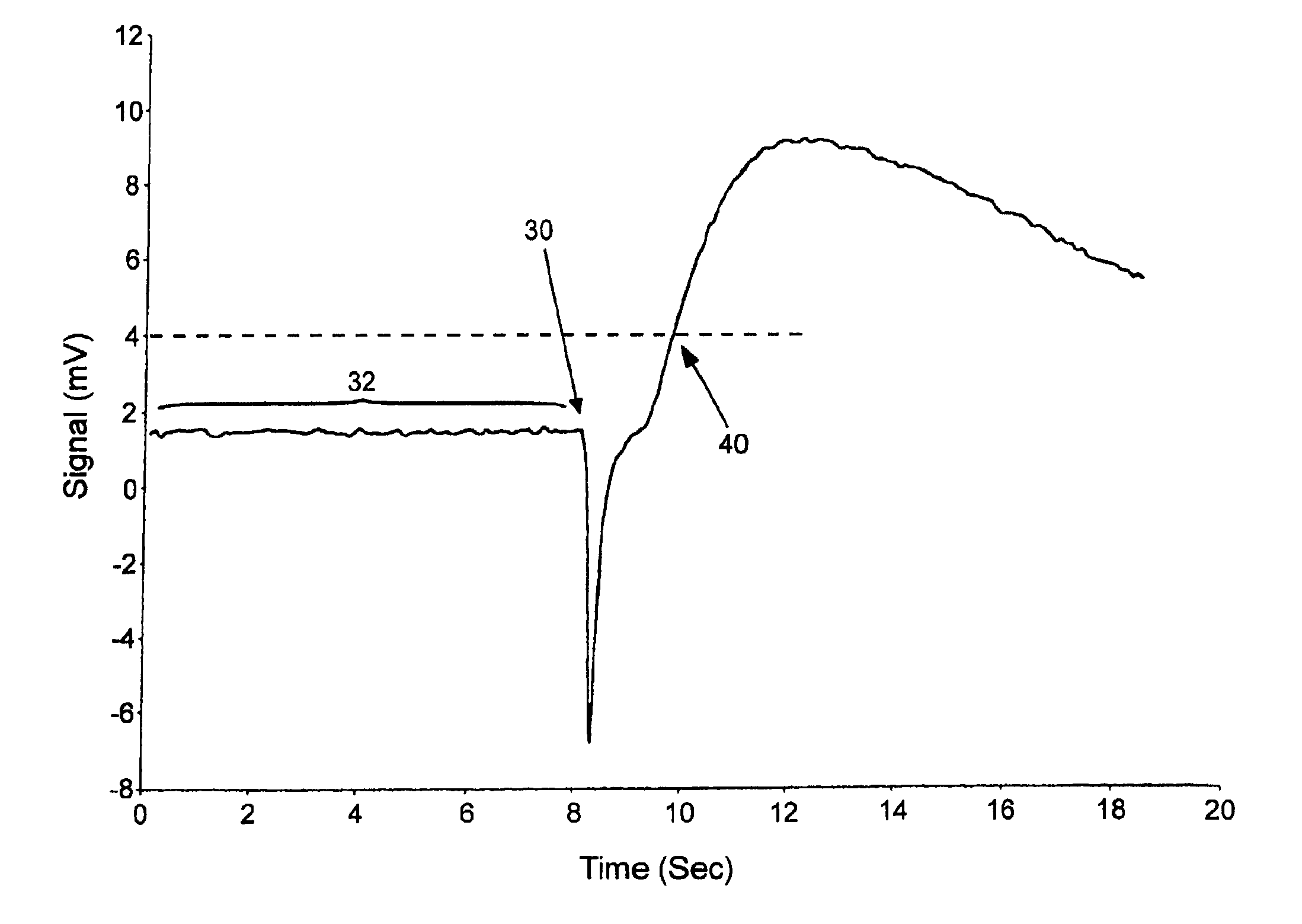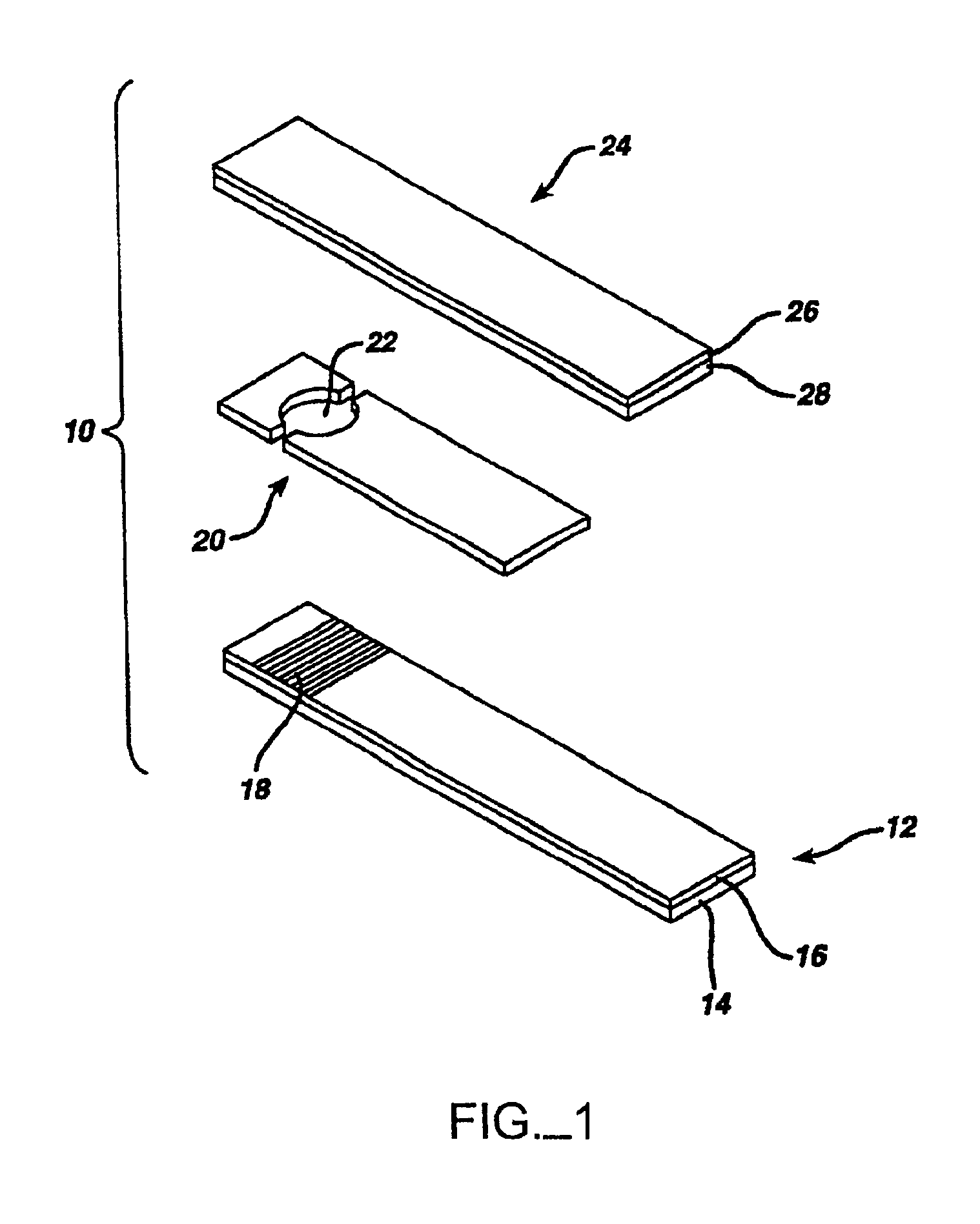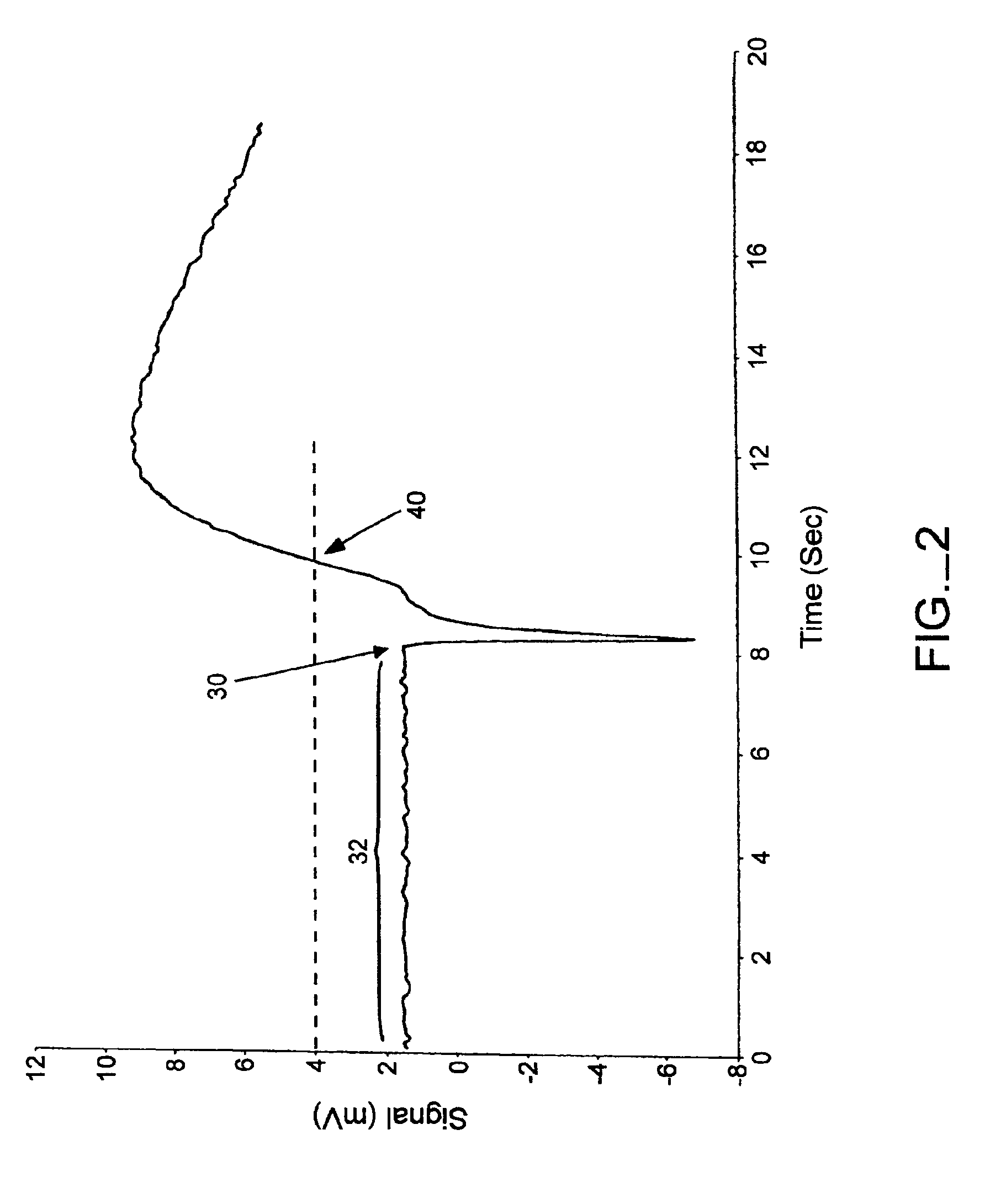Passive sample detection to initiate timing of an assay
a sampling sample and timing technology, applied in the field of electrochemical assays, can solve the problems of less accurate analyte concentration measurement, affecting the accuracy of the timing of the assay, and the measured current is not an accurate representation of the sample analyte concentration, so as to reduce the number of components, less complicated, and eliminate the effect of false or inaccurate assays
- Summary
- Abstract
- Description
- Claims
- Application Information
AI Technical Summary
Benefits of technology
Problems solved by technology
Method used
Image
Examples
Embodiment Construction
The present invention provides methods and systems for automatically detecting the presence of a sample applied to a biosensor (the “sample detection phase”) and then initiating the measurement of a targeted characteristic, e.g., the concentration of one or more analytes, of the sample (the “measurement phase”) immediately upon sample detection. The sample detection phase of the subject methods is performed passively, immediately upon application of a sample to a biosensor, without application of a voltage step function (as with chronoamperometry) or current step function (as with chronopotentiometry). The subject systems include electronic circuitry for performing these steps. Also provided by the present invention are kits that include a test strip meter which incorporate the subject systems for practicing the subject methods.
Before the present invention is described in further detail, it is to be understood that this invention is not limited to the particular embodiments describe...
PUM
| Property | Measurement | Unit |
|---|---|---|
| voltage | aaaaa | aaaaa |
| time | aaaaa | aaaaa |
| thickness | aaaaa | aaaaa |
Abstract
Description
Claims
Application Information
 Login to View More
Login to View More - R&D
- Intellectual Property
- Life Sciences
- Materials
- Tech Scout
- Unparalleled Data Quality
- Higher Quality Content
- 60% Fewer Hallucinations
Browse by: Latest US Patents, China's latest patents, Technical Efficacy Thesaurus, Application Domain, Technology Topic, Popular Technical Reports.
© 2025 PatSnap. All rights reserved.Legal|Privacy policy|Modern Slavery Act Transparency Statement|Sitemap|About US| Contact US: help@patsnap.com



